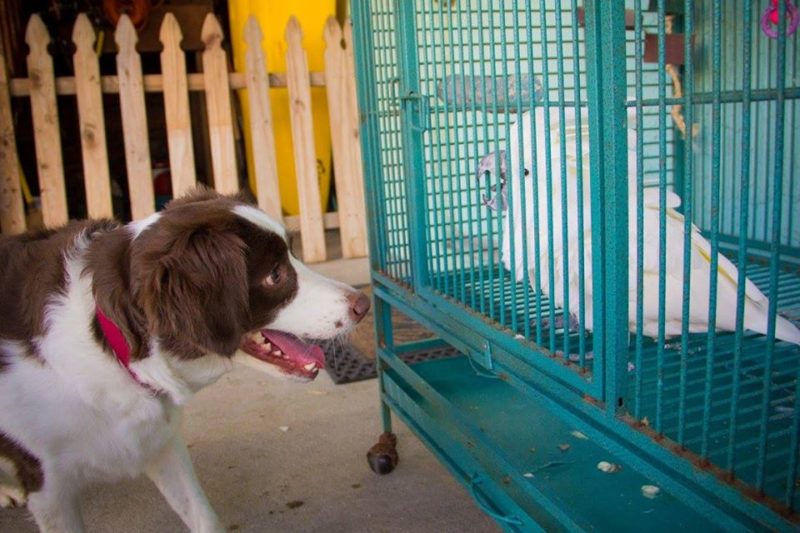Predatory drive is inherent in dogs; this is a fact. Though domesticated from wolves, dogs are still predators, with some breeds having retained more of these drives than others. Many of the traits that are highly desired in working dogs can cause issues when we take these dogs into a pet situation and do not give them the outlets that they need. One of these traits is a strong predatory drive. This shows up in varying degrees depending on your dog’s individual genetics. Your average Shih Tzu has very minimal predatory drive, while the average Jack Russell has a high predatory drive. Understanding your own dog’s genetics and behavior will help you to set them up for success.
What Is Predatory Drive?
The predatory drive is a dog’s desire to catch and kill another animal. This drive is essential in any predatory species if they stand any chance at survival in the wild. As we have domesticated the dog, we have also manipulated the amount of this trait that our dogs have. Golden retrievers and pugs often have a level of predatory drive so low that it would never work in nature. Many terriers and working-bred dogs have predatory drive so high that it would not be compatible with surviving in the real world. Because we can provide a controlled environment and supply our dog’s resources, these dogs can still thrive within their given situations.
Predatory Drive At The Genetic Level
All dog breeds were developed for a specific reason. Toy breeds were selected as companions, so they certainly don’t need much predatory drive, and it can be a detriment to their job. Herding breeds needed to have a strong prey drive without the desire to kill the animals they were in charge of. Terriers were created to hunt and kill critters, so they frequently have the highest level of predatory drive of all the breed types. Research your individual breed and talk to a trainer to determine what level of this drive your breed tends to have. It is also important to keep in mind that different lines within a breed will vary. A terrier bred for the show ring may not demonstrate as much drive as a dog bred to go to the ground after vermin.
When The Drive is Too Strong
High predatory drive does not fit into most people’s lifestyles and goals for their dog. Many things can trigger aggression in a dog with high predatory drive, including cats, small dogs, kid’s toys, skateboards, rollerblades, small children, squirrels, bicycles, and people moving or behaving erratically. Not every dog with high predatory drive will react to every possible trigger. Some dogs clearly understand that small dogs are still dogs and can be very social with them but have issues with other small animals. Other dogs have stronger reactions to noise than they do to move.
When predatory aggression is triggered by something, the response is powerful and difficult to stop. In fact, it is impossible to eliminate predatory aggression from a dog that has it at a high level. Remember that this is a strong evolutionary trait and is completely instinctual. The correction will often not work, as the dog is in a mind where discomfort will not have a suppression effect and can even stimulate the dog more. Rewarding the dog for ignoring the stimulus is not effective either, as the stimulus is often too strong for the dog to care about whatever reward you have to offer.
So what should you do if your dog has a predatory response to a given thing? Management is key and establishing other jobs and outlets to ensure that your dog is fulfilled in his daily life. If small children strongly trigger your dog, you should not be going for walks near the playground. If you are concerned about your dog’s response in public, they should wear a muzzle. If your dog has demonstrated a strong, negative response to small animals, you should not go out and adopt a cat. You also need to give your dog plenty of outlets for this type of behavior. This can come in the form of playing retrieve, playing tug, chasing a flirt pole, or other activities that allow your dog to chase and catch something in a manner that is safe and productive.
If you are concerned about your dog’s level of predatory drive and how to handle it, please give us a call so that we can help you and your dog get on the right track.



